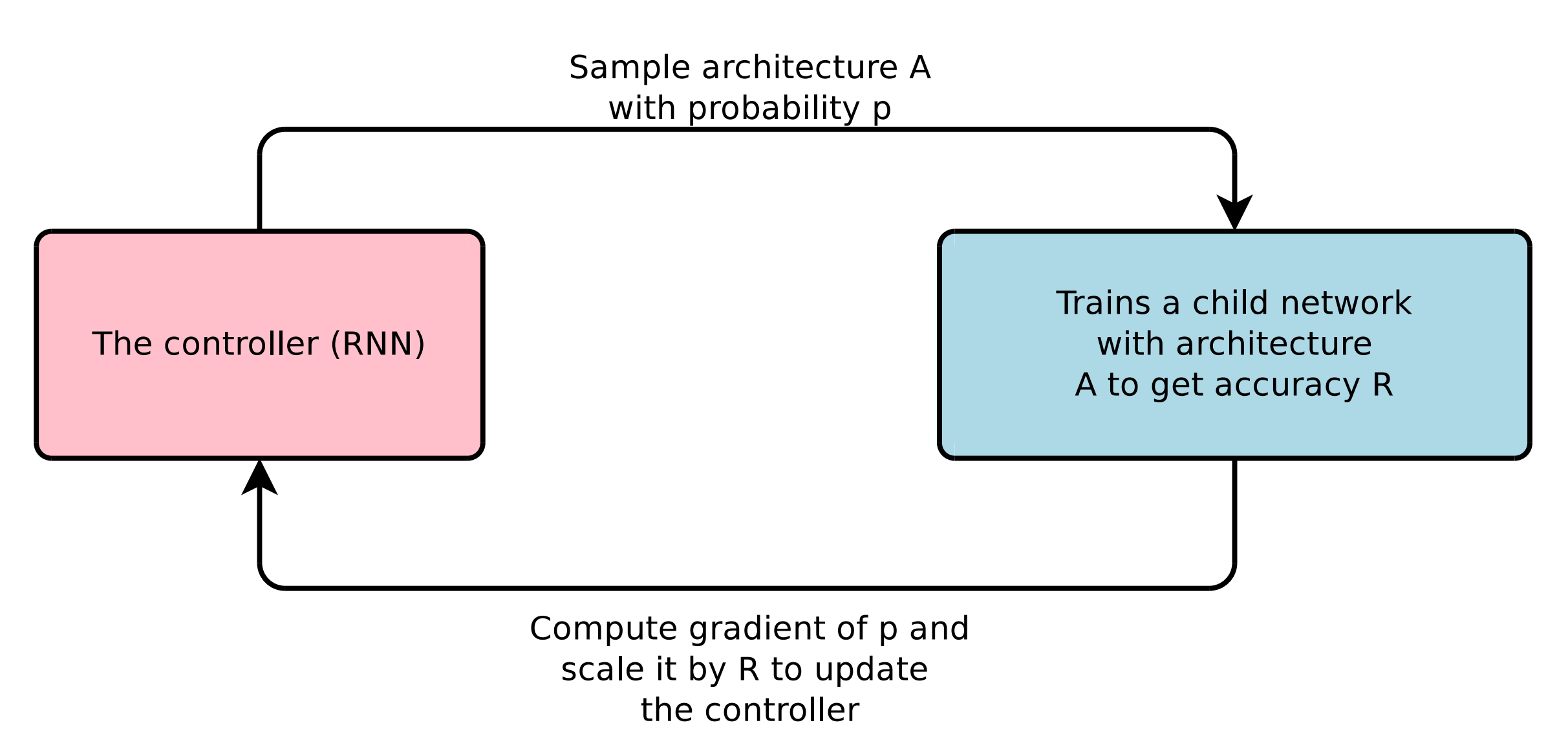Summary: NAS with RL
Contents
Download the paper
What is the paper about?
- The paper introduces Neural Architecture Search (NAS), a method that uses a RNN as a “controller” to automatically generate neural network architectures.
- The controller is trained via reinforcement learning, with the validation accuracy of the “child network” serving as the reward signal.
- It demonstrates the ability to discover architectures for both convolutional (CIFAR-10) and recurrent networks (Penn Treebank) that rival or surpass human-designed models.

What is new about this specific paper, compared to prior work?
- It proposes a flexible controller RNN that can sample variable-length architecture descriptions, expanding beyond fixed hyperparameter settings seen in standard Bayesian or random search methods.
- It applies RL to directly optimize architectures for higher validation accuracy, rather than relying on supervised signals or manual heuristics.
- It shows state-of-the-art performance on CIFAR-10 and Penn Treebank, suggesting the automatically discovered architectures can compete with the best human-engineered models.
What experiments were run to support the arguments in this paper?
CIFAR-10 image classification:
- The authors let the controller search for convolutional networks with optional skip connections and pooling layers.
- The discovered architectures were trained and tested, achieving error rates better than leading manually designed networks.
Penn Treebank language modeling:
- The controller was used to search for novel recurrent cell architectures (beyond LSTM).
- The best discovered cell achieved test perplexities better than previous state-of-the-art models.
- The authors also tested the new cell on character-level language modeling (still on PTB) and briefly on a machine translation task (GNMT framework), showing further performance gains.
What are the shortcomings/limitations of this paper?
- Training thousands of candidate architectures is extremely expensive, even with large-scale parallel resources.
- Although the search space is large, it is still constrained by the design choices (e.g., certain filter sizes, skip-connection types, or cell structures).
- While the discovered architectures worked well on CIFAR-10 and PTB, there is no guarantee they are optimal for other datasets or tasks.
- Setting up distributed reinforcement learning for large-scale architecture search requires significant engineering effort.
What is a reasonable next step to build upon this paper?
- Investigate more efficient or sample-efficient search strategies, such as weight-sharing, early stopping, or more advanced reinforcement learning algorithms.
- Incorporate more types of layers or operations (e.g., attention mechanisms, dynamic routing) while keeping the search process tractable.
- Explore ways to transfer discovered architectures across tasks, possibly adapting or fine-tuning them with minimal retraining.
- Searching architectures under memory, latency, or power constraints to make the method more practical for real-world applications.
Appendix
- CIFAR-10: A benchmark image classification dataset containing 60,000
32×32color images in 10 classes. - Penn Treebank (PTB): A benchmark dataset for language modeling used to evaluate the performance of RNN.
- Weight Sharing: Reusing the same weights across different parts of the network to reduce computational cost during the search process.